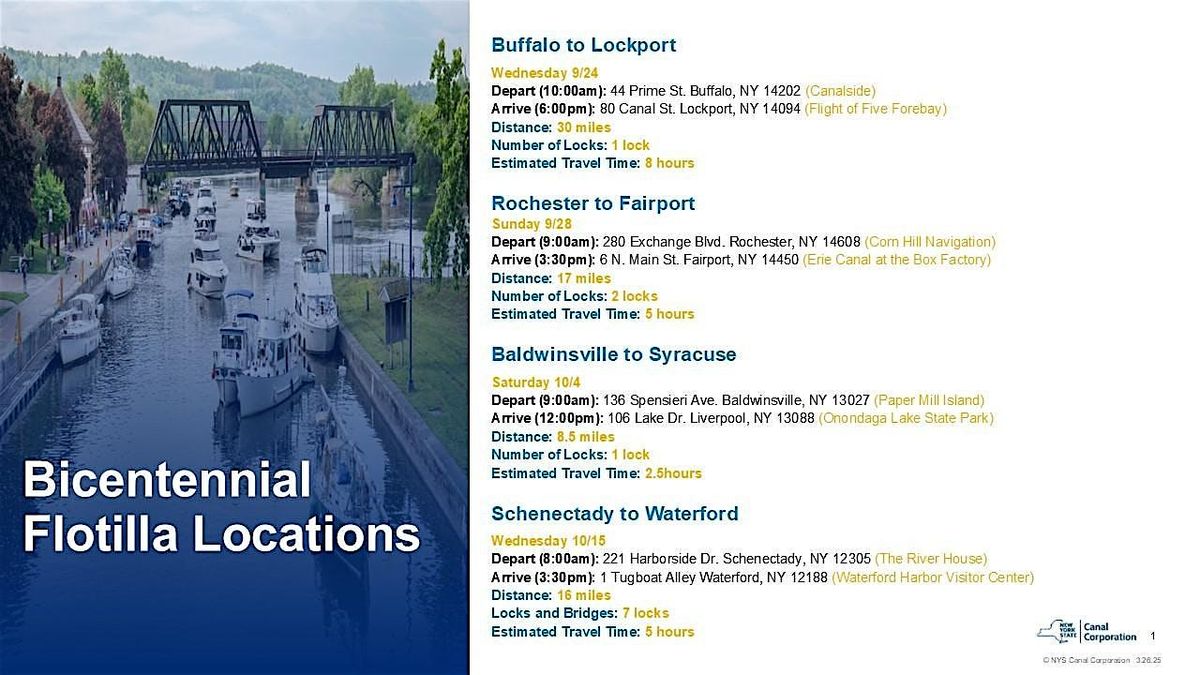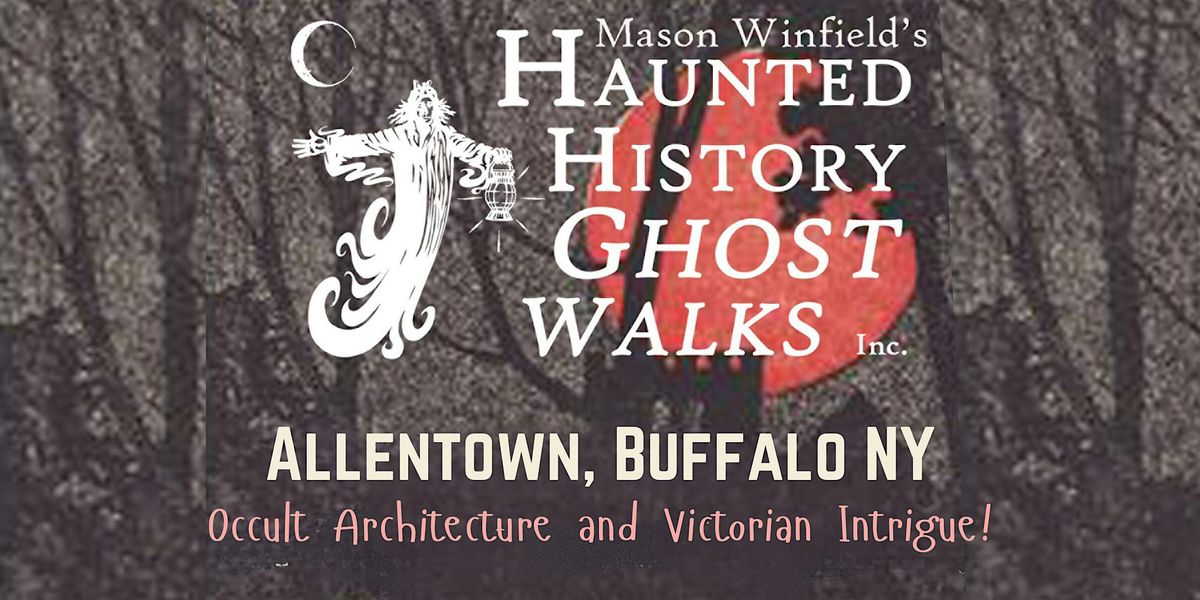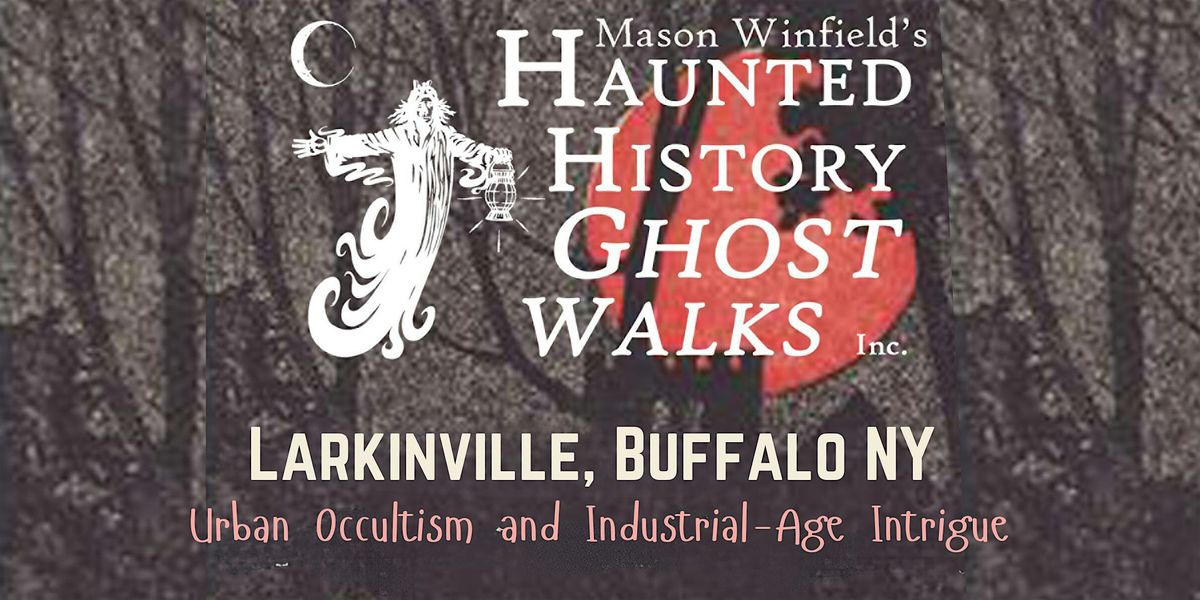PreservationWorks Big Buffalo Tour WEEKEND!
Schedule
Fri, 03 Oct, 2025 at 04:00 pm to Sun, 05 Oct, 2025 at 04:00 pm
UTC-04:00Location
Richardson Olmsted Campus | Buffalo, NY
 Get ready to be a part of an extraordinary weekend of History, Photography, Preservation, and Fun while supporting a great cause! We're partnering again with our friends at the Richardson Olmsted Campus, the Lipsey Architecture Center, and Preservation Workshop to invite you to a new event that you do not want to miss!
Get ready to be a part of an extraordinary weekend of History, Photography, Preservation, and Fun while supporting a great cause! We're partnering again with our friends at the Richardson Olmsted Campus, the Lipsey Architecture Center, and Preservation Workshop to invite you to a new event that you do not want to miss!Those who have purchased a Gold or Silver membership in the last year will receive an email on 8/20 on or around 9pm EDT with links for pre-sale tickets. Pre-sale for gold starts on 8/21 at noon EDT and 8/22 at noon for silver members. General admission goes on sale on Saturday, 8/23 at 9am.
Note: Children under the age of 16 cannot be admitted to the tours. All participants must sign a safety waiver and a code of conduct.
Arrive Friday, October 3rd, and tour the city on your own for the day- we'll provide a list of highlights of local museums and historic sites for your own self-guided tour.
Friday Night:Visit the Falliday Market, a big market full of food, drink, crafts, and activities right on the hospital campus!
Saturday (Early Afternoon): at 12pm, join us at the Buffalo History Museum for a panel conversation and Q&A, "Buffalo: Yesterday, Today, Tomorrow." Led by our spokesperson, Dr. Robert Kirkbride, you'll hear about the past, present, and future of several historic buildings in Buffalo. including:
The Richardson Olmsted Campus
Colonel Ward Pumping Station
St. John Kanty's Catholic Church
Buffalo Central Terminal
Saturday (Late afternoon/Early evening): at 3pm, head back to the ROC for our famous 4-Hour Photography Tour of the vacant portions of the hospital, where you will be led in small groups of 10 by our volunteers and docents- just in time for golden hour.
Saturday Night: Stay local, and enjoy another night of the Falliday Market, or come join us for a meetup at Brightsmith Brewing, a brewery with a full bar and food menu in a beautifully redone industrial building.
Sunday: (9am-3:30pm) Meet us at the ROC at 8:45am for a trolley ride for 3 mini photography tours of the locations you heard about in the panel conversation yesterday.
10am-11:30am: Colonel Ward Pumping Station
12pm-1:30pm: St John Kanty's Catholic Church (Note: we will split the group here into 2 groups and take turns between the building and lunch. You can bring your own lunch or you can order a bagged lunch. Bagged lunches MUST be preordered)
2p-3p: Central Terminal (please note this is mostly an exterior tour with some indoor/outdoor spots)
We'll return to ROC by 3:30p, just enough time to catch a little more of the Falliday Market, or see more of the sites of Buffalo!
Ticketholders will be given the opportunity to stay at the Richardson Hotel for a reduced rate of $129/night during this time.
This is an event you don't want to miss! Your $250 admission covers it all!
Note: We do have a limited number of additional tickets for Saturday's tour ONLY for $125. These tickets do not include the Sunday tours.
About the Locations
The Richardson Olmsted Campus (Buffalo State Asylum for the Insane)
Widely considered one of Buffalo’s most important buildings, the iconic towers of the Richardson Olmsted Campus provide its surrounding neighborhoods with a sense of place, pride, and insight into the city’s rich history.
At the conclusion of the Civil War in 1865, a war in which 600,000 Americans perished, states and cities renewed their focus on treating those with mental illness. For Western New York at this time, the closest mental health facility was located 200 miles away in Utica, New York. Civic leaders proposed constructing a state-of-the-art asylum somewhere in the western part of the state. The City of Buffalo was chosen, and a 203-acre parcel of land was set aside to serve as the grounds for the asylum. Along with substantial greenspace, city leaders promised the facility 100 years of free water.
The Buffalo State Asylum for the Insane was based on the medical philosophies of Dr. Thomas Story Kirkbride, a Quaker physician from Philadelphia who promoted benevolent care, fresh air, greenspace, and exercise as the cure for mental illness. His “Kirkbride Plan” was the first architectural-scientific response to mental health. Over 80 Kirkbride Asylums were constructed during the 19th century, and the majority followed the same linear layout: a central administration building flanked by five wards on either side, separated by the sexes, with the most critical patients located in the outermost buildings from the center.
In accordance with the Kirkbride Plan, landscape architect Frederick Law Olmsted was commissioned to design the grounds. His vision included 2000 shrubs, 250 trees, a large lawn for activities, and a 100-acre farm for patients to engage in agricultural therapy. For the building itself, a young Henry Hobson Richardson was tasked with creating the 600,000 square foot monolithic structure. The first American architect to be trained overseas (École des Beaux-Arts in Paris), HH Richardson used the Buffalo State Asylum project as the launching pad for his signature architectural style: Richardsonian Romanesque.
A cornerstone was laid in 1872, and in 1880 the asylum opened for the first time (note: only the eastern sections had been completed up to this point). It was not until 1895, nine years after Richardson’s death, that the entire complex was completed. Originally designed for 660 patients, changing state legislation quickly led to overcrowding, with close to 4,000 patients living on-site. The progressive treatment designed to be administered at the Buffalo State Asylum, soon gave way to diminished care and results.
In 1927, the northern farmlands were ceded by New York State to Buffalo State University to serve as their permanent home. This reflected a change in mental health treatment philosophy in the mid-1900s. The introduction of pharmaceutical drugs and homecare, saw asylum-style care become obsolete. After years of struggling with low funding and changing mental health guidelines, the last patients were moved out of the facility in 1974 to the present-day Buffalo Psychiatric Center (Strozzi Building).
In 1986, to afford it some protection, the series of buildings was designated as a National Historic Landmark. The entire property sat vacant for over 30 years, until 2006 when a group of Buffalonians led by Standford Lipsey, the former publisher of the Buffalo News, sued the State of New York for control of the site. After a successful suit, the Richardson Center Corporation was created as the non-profit steward of the historic Richardson Olmsted Campus. Following close conversations with civic leaders and the local community, the RCC set out to restore and rehabilitate the largest commission of H.H. Richardson’s career.
Today, the Campus has been reactivated as a community space for public programming, architectural discussions, and historical tours. The Richardson Hotel is the main tenant on Campus, operating an 88-room boutique hotel and conference center. The next project to be completed is the long-awaited Lipsey Architecture Center Buffalo, designed to be a worldclass architecture museum highlighting Buffalo’s rich architectural legacy. The project will involve the adaptive reuse of the 1875 kitchen building located on the northern side of the property, with a planned expansion designed by the internationally recognized architecture firm Höweler & Yoon.
Colonel Ward Pumping Station
The City of Buffalo began construction in 1907 on a new intake and tunnel for a pumping station to supplement the existing facility on Massachusetts Ave. The Buffalo Dredging Co. completed the intake project in 1913. The new intake lay in the “Emerald Channel”, the clearest portion of the Niagara River. Twelve ports in a circular brick and steel housing admitted water through sluice gates. The intake itself consisted of 3/4” steel plates, riveted into two concentric rings with concrete infilling. A concrete-lined tunnel, 11’3” x 12’, ran 6651’ to the new pumping station at the foot of Porter Ave. and then on to the Massachusetts Ave. station. Work on the new pumping station began in 1909; but the collapse of the roof trusses in 1911 became a political scandal, and so completion was delayed until 1916.
Designed by the local firm of August Carl Eisenwein and James A. Johnson, the building consists of brick curtain walls over a steel frame with reinforced concrete floors and roof, the roof was initially covered by Ludowici-Celini tiles, and the ornamentation included terra-cotta trim. The structure was named after the then-Commissioner of Public Works. As of 1916, intake water was channeled directly into the pumping station via two subterranean canals that forked around the central boiler house wing. River water was chlorinated at the intake but was not otherwise treated. In 1924, a rapid mechanical sand filtration system was installed in buildings adjacent to the pumping station. A raw water conduit from the intake tunnel led to a head house and low-lift pumping station. The lowlift duty was eventually handled by a total of five Dayton-Dowd electric centrifugal pumps; their capacities ranged from 750,000 to 45,000,000 gallons per day. The filtration units installed in 1924 were rated at 240 mgd. They did not occupy all of the filter gallery, and the remaining space was used as a clear water reservoir. An underground reservoir extension was constructed in 1936.
The filtration plant also included a coagulating basin from which treated water passed through Venturi meters and then to the pumping station via a filtered water conduit. The 1916 pumping station consists of an engine room and three perpendicular wings. The central wing originally contained eight Babcock & Wilcox 750 hp sectional water-tube boilers. These units were replaced in 1952. Six of the successors were removed in 1963 and the remaining two converted to gas-firing for steam heat. The two 250’ chimneys that flanked the boiler house are no longer extant. The north wing contains offices and storage. Located in the south wing are the machine, pipe and meter shops. Five additional pumps were installed in 1915. Carrying the nameplate of the former Holly Works in Lockport, they were manufactured at the Snow Steam Pumps plant on Buffalo’s East Side. The vertical triple-expansion engines have cylinder dimensions of 31” & 64” & 98” x 66”. Each engine had a capacity of 30 mgd and was rated at 1200 hp. Including two 20’ flywheels, the approximate weight of each unit is 1100 tons. These engines have not operated regularly since boiler capacity was cut back. The station’s high-lift duty is now carried by three 50 mgd DeLaval horizontal centrifugal pumps driven by 2500 hp General Electric motors; these units were installed in 1938. At the time of its completion Col. Ward Station’s 150 mgd capacity made it the largest municipal pumping plant in the United States.
Buffalo Central Terminal
The Buffalo Central Terminal has long been the people’s palace. Opened in 1929 to serve more than 200 trains and 10,000 passengers daily. An Art Deco icon integral to Buffalo’s architectural legacy, the Buffalo Central Terminal was placed on both the National and State Registers of Historical Places in 1984. Despite the last train having left the station in 1979, the Terminal’s importance as both a major piece of transportation infrastructure and a cultural asset in the greater Broadway-Fillmore neighborhood make its restoration a singular opportunity for the region.
In 1997, the 12.5-acre Buffalo Central Terminal site was acquired by the non-profit Central Terminal Restoration Corporation (CTRC). For 25 years the CTRC has been an active steward of the building, relentlessly advocating for the Terminal.
St. John Kanty's Catholic Church
In the late 1800s, the Polish immigrant community in Buffalo had outgrown St. Stanislaus (St. Stan’s). Travel to that parish was treacherous, as worshipers had to cross dangerous railroad tracks, which led to fatalities. To address this, Rev. Jan Pitass made the decision to establish a new parish, despite concerns about fragmenting the community.
Rev. Thomas Flaczek was the first pastor (1892–1895). At its inception, the parish had over 250 families and more than 300 children. A school opened on September 4, 1894, starting with 325 students taught by three Felician sisters and three lay teachers.
By 1927, the school’s basement was overcrowded and deemed unsafe. Pastor Fr. Garstka (1910–1941) spearheaded the construction of a new Lyceum building: Eight properties were bought for roughly $53,000. Bishop William Turner provided a $350,000 loan for construction. Groundbreaking was on June 30, 1930, with the cornerstone laid on September 29, 1930. The Lyceum, dedicated on September 13, 1933, could seat 2,000 people and included classrooms, bowling alleys, club rooms, a gymnasium, and state-of-the-art sound and lighting. During the Depression, it housed a federally funded adult education program serving over 1,200 learners. In 1937, Rev. Stanley Kulpinski launched a “Labor College” offering classes in arts, drafting, public speaking, and carpentry.
The Lyceum became a central venue for popular “big band” dances in the 1940s and 1950s. In 1942, the parish celebrated its 50th anniversary, marked by a repainting of the sanctuary artwork by noted local artist Józef Mazur (who had earlier decorated St. Adalbert’s Basilica).
A sanctuary fire occurred in 1948, damaging walls and murals, but prompting restoration. A more destructive fire hit on January 12, 1955, causing a three-alarm blaze that destroyed stained glass, altars, murals, organ pipes, and statuary. Miraculously, a life-size carving of the Last Supper (crafted by Frank Pedevilla and originally intended for Montreal’s Notre-Dame) survived and was relocated to the choir loft.
St. John Kanty Church in Buffalo, New York, closed in 2025 as part of the Buffalo Diocese's Road to Renewal initiative.The closure is due to a combination of factors, including declining church attendance and a decrease in the number of active priests.


















